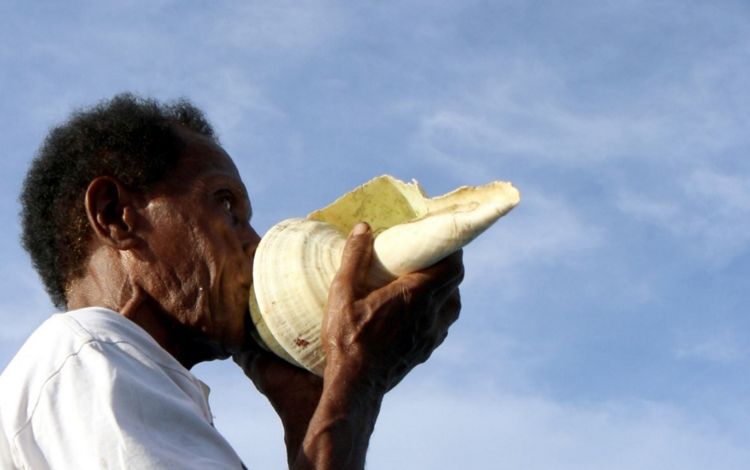As the sunset approaches, a sign the night is coming. Yefta Mjam (54) is busy in his backyard which is directly adjacent to the sea. He prepares his lantern and spears to look for sea cucumbers. He also brought basic necessities like food and drink on the boat. These are all provisions to accompany him to sea tonight. “Today is the first day of opening sasi. I will try my luck to find sea cucumbers. May God bless so that the weather is good and the results that I get are abundant. To increase my family's savings," Yefta said happily.


This view is commonly found in homes Folley villagers, East Misool District, Raja Ampat Regency. "This is the day we've been waiting for. For a year, we closed the sasi area in this village and guarded it. The hope is that when opened, the results will be abundant,” said Nikson Moom (40) while sipping This view is commonly found in the homes Folley villagers, East Misool District, Raja Ampat Regency. "This is the day we've been waiting for. For a year, we closed the sasi area in this village and guarded it. The hope is that when opened, the results will be abundant,” said Nikson Moom (40) while sipping his coffee.
Sasi is a natural resource management practice carried out by indigenous peoples by closing the use of resources at sea and land for a certain period of time. This customary practice is still widely practiced by people in Maluku and Papua. The opening and closing of the sasi area usually begins with a prayer to God Almighty and the ancestors.



The people of Kampung Folley manages a sasi area of 297 hectares. They routinely monitor and do not take sea cucumbers that are under 15 cm in size when opening sasi. Besides not selling well if juvenile, taking sea cucumbers smaller than 15 cm will also have an impact on reducing sea cucumber eggs. Sea cucumbers of this size have not had time to lay eggs and produce the fry of sea cucumbers needed to maintain the number of sea cucumbers in the area.
“Our ancestors taught us the wisdom in utilizing natural resources through sasi, so we will continue to preserve this sasi culture,” said Leonard Moom, a traditional leader in Kampung Folley.
The sasi area in Folley Village is in the territory of the Fadimpo and Moom clans. However, people outside the clan as well as from outside Folley village are allowed to participate in the sasi harvest. Of course, they must comply with the rules for harvesting sasi. In addition to only being allowed to take sea cucumbers of at least 15 cm in size, catching sea cucumbers must use environmentally friendly tools and are prohibited from using compressors or potassium.
Sasi Harvest
After harvesting sasi, the residents hands over the sea cucumber specimens first to the monitoring team for data analysis.






Sasi Harvest: Yefta Mjam holding a sea cucumber caught sasi. © Nugroho Arif Prabowo

Catch Result: Elsa Moom and the sea cucumbers she got when she opened sasi. © Nugroho Arif Prabowo

Sea Cucumber Data Collection: The monitoring team collects data on the types and sizes of sea cucumbers caught. © Nugroho Arif Prabowo

Sea Cucumber Sasi: Sea cucumber caught when opening sasi in Kampung Folley. © Nugroho Arif Prabowo

Drying the Sea Cucumber: Residents are drying sasi sea cucumbers. © Nugroho Arif Prabowo
From data collected by Yayasan Konservasi Alam Nusantara, since the sasi area in Folley Village was better managed, there has been an increase in the number of biota and economic benefits. From only 6 species of sea cucumbers in 2013-2014, in 2017 11 types of sea cucumbers were found. One of them is a species of sea cucumber with high economic value, namely the sea cucumber (Holoturian scabra), which in the local market costs between Rp. 600,000 – Rp. 1.000.000/kg. Meanwhile, the sasi harvest data in 2013-2019 shows that the average sales of sea cucumbers per family is IDR 2-4 million.


